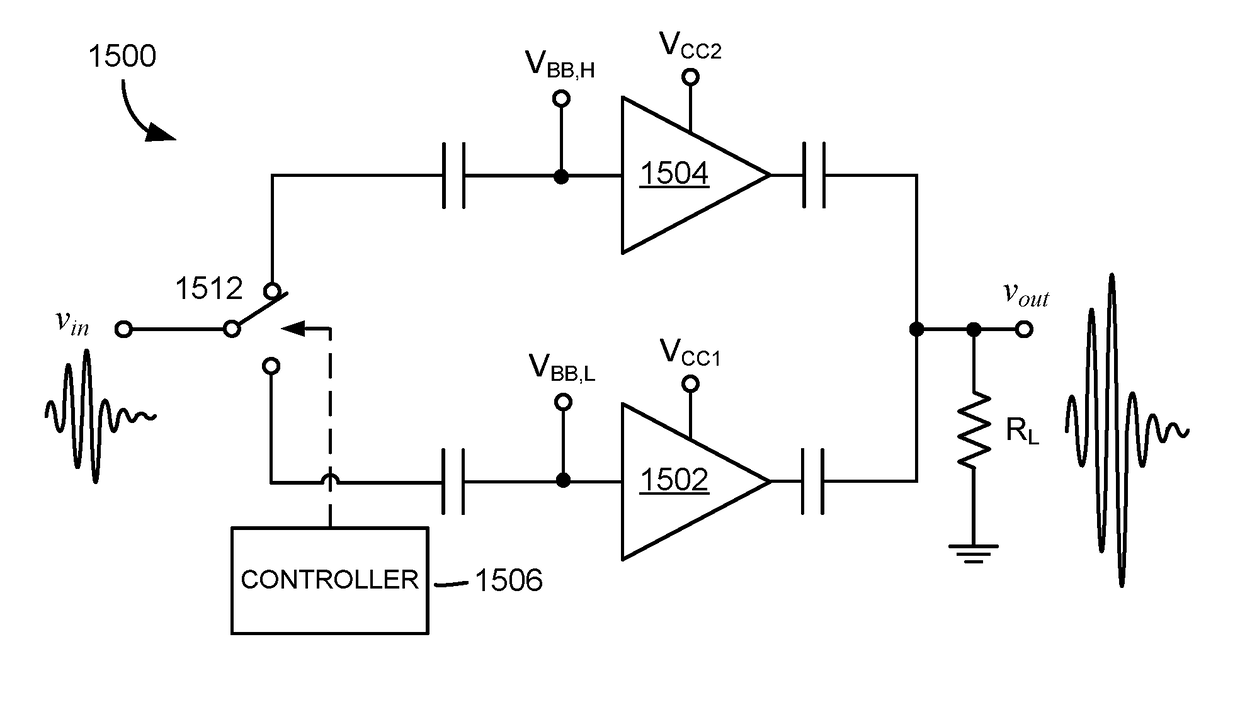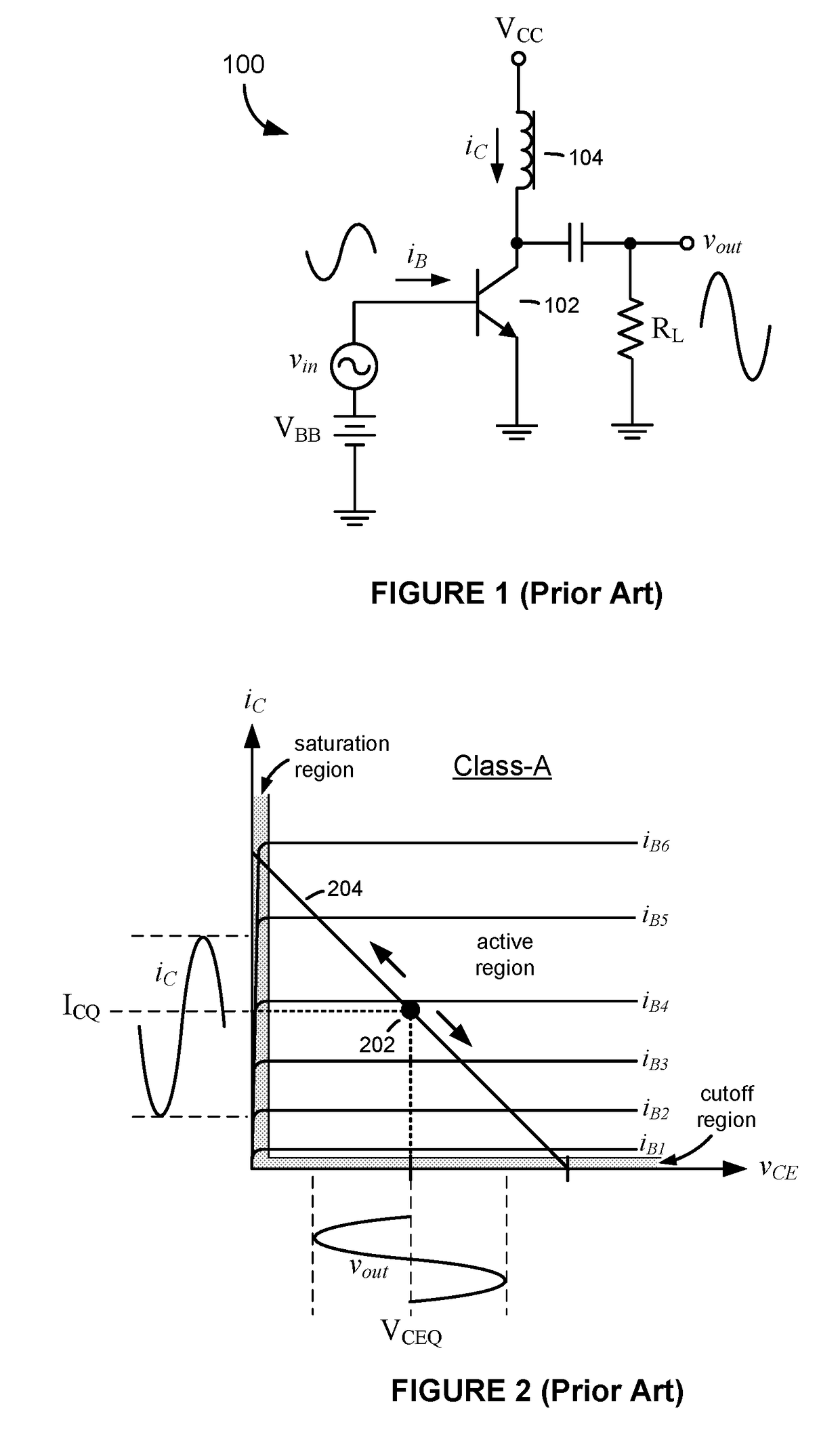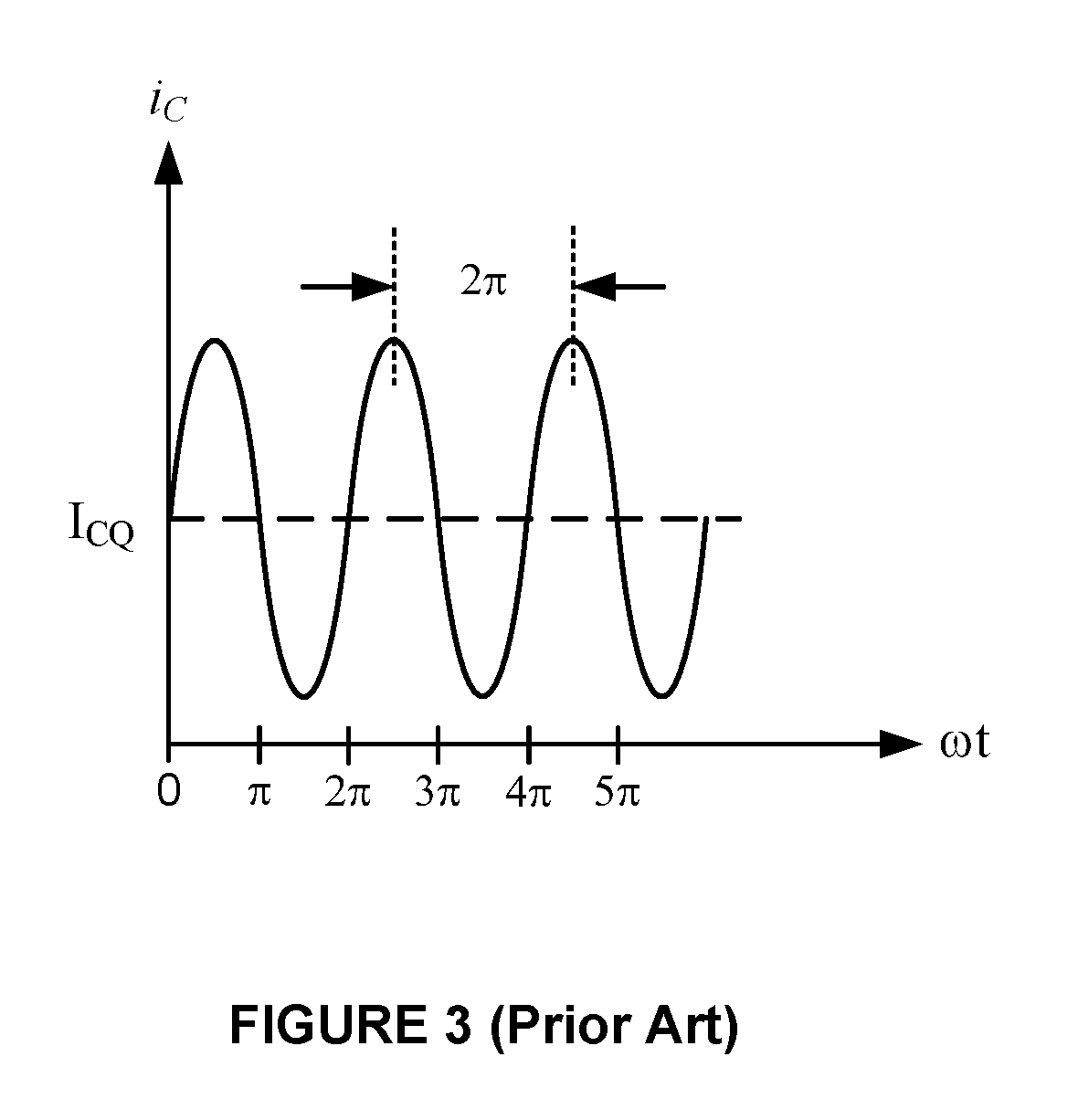Highly Linear, Highly Efficient Wideband RF Power Amplifier Having Wide Video Bandwidth Capability
a power amplifier and wideband technology, applied in the field of radio frequency power amplifiers, can solve the problems of insufficient wideband video bandwidth capability, and inability to design an rf pa that is both highly linear and highly efficient, and achieves wide operating bandwidth, high back-off conversion efficiency, and insensitivity. the effect of high efficiency
- Summary
- Abstract
- Description
- Claims
- Application Information
AI Technical Summary
Benefits of technology
Problems solved by technology
Method used
Image
Examples
Embodiment Construction
[0053]Referring to FIG. 15, there is shown a radio frequency power amplifier (RF PA) apparatus 1500, according to one embodiment of the present invention. The RF PA apparatus 1500 comprises a low-power RF PA 1502, a high-power RF PA 1504, and a controller 1506. The low-power RF PA 1502 and high-power RF PA 1504 may be constructed using either bipolar junction power transistors (BJTs) or field-effect power transistors (FETs). Further, to support high-power, high-frequency applications, any high-power, high-frequency power transistor technology may be used, including, for example, gallium-arsenide (GaAs) metal-semiconductor FETs (MESFETs), gallium-nitride (GaN) high electron mobility transistors (HEMTs), laterally-diffused metal-oxide-semiconductor (LDMOS) transistors, high-breakdown-voltage transistors using silicon-on-insulator (SOI) technology, high-power heterojunction bipolar junction (HBTs), etc. In the detailed description that follows, it is assumed for purposes of illustratio...
PUM
 Login to View More
Login to View More Abstract
Description
Claims
Application Information
 Login to View More
Login to View More - R&D
- Intellectual Property
- Life Sciences
- Materials
- Tech Scout
- Unparalleled Data Quality
- Higher Quality Content
- 60% Fewer Hallucinations
Browse by: Latest US Patents, China's latest patents, Technical Efficacy Thesaurus, Application Domain, Technology Topic, Popular Technical Reports.
© 2025 PatSnap. All rights reserved.Legal|Privacy policy|Modern Slavery Act Transparency Statement|Sitemap|About US| Contact US: help@patsnap.com



